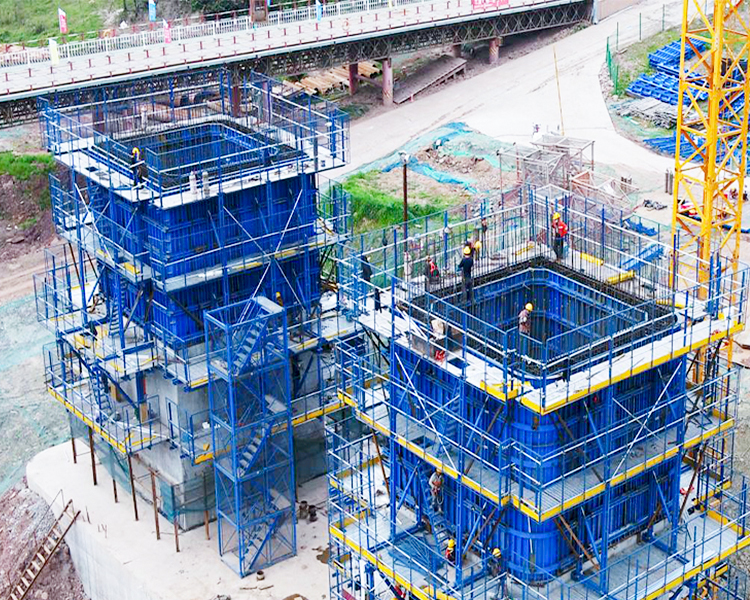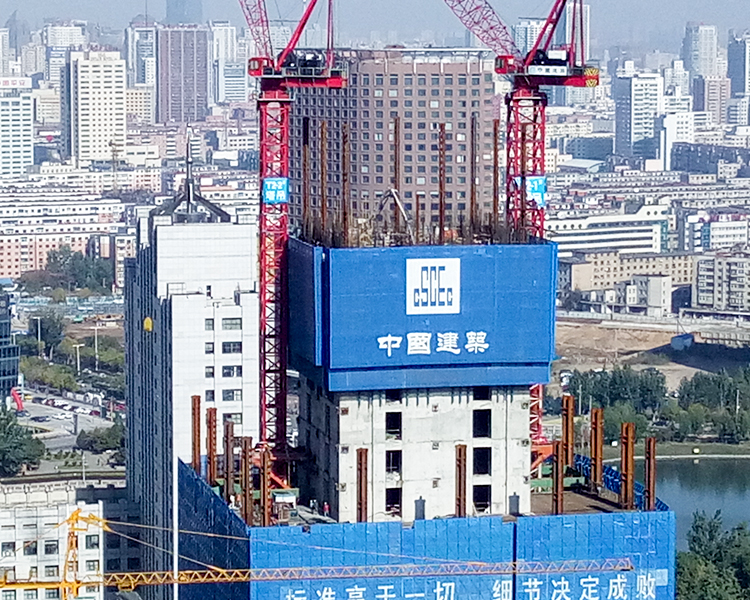Building High and Safe with Lianggong Hydraulic Auto-Climbing Formwork System
The construction of high-rise buildings is a complex and challenging process that requires advanced technology and expertise. Among the many critical components of high-rise construction, the formwork system is one of the most important. Lianggong Hydraulic Auto-Climbing Formwork System is a revolutionary solution that addresses the unique needs of high-rise construction, providing a safe, efficient, and cost-effective method for building tall structures.
What is Lianggong Hydraulic Auto-Climbing Formwork System?
Lianggong Hydraulic Auto-Climbing Formwork System is a self-climbing modular formwork system designed specifically for high-rise buildings. The system consists of vertical and horizontal panels, connected by steel walers and tie rods, which are assembled on-site and lifted to the next level using hydraulic jacks. The system is anchored to the building structure and can climb automatically, eliminating the need for manual labor and reducing the risk of accidents.
The panels are made of high-strength steel and can be customized to fit the specific shape and size of the building. The system is designed to accommodate various types of building structures, including shear walls, core walls, and frame structures. The system is also equipped with safety features, including guardrails and safety nets, to ensure the safety of workers.
Characteristics of Lianggong Hydraulic Auto-Climbing Formwork
(1) Hydraulic auto-climbing formwork can climb as a complete set or individually. The climbing process is steady, synchronous and safe.
(2) The brackets of the auto-climbing formwork system will not be dismantled until the construction period is finished, thus saving space for the site and avoiding damage to the formwork, especially to the panel.
(3) It provides all-round operating platforms. The contractors do not need to reinstall operating platforms, thus saving the cost on material and labor, and improving safety.
(4) The error of structure construction is small. As work on correction is simple, the construction error can be eliminated floor by floor.
(5) The climbing speed is fast. It can speed up the whole construction work (usually 5 days for one floor)
(6) The formwork can climb by itself and the cleaning work can be done in situ, thus the use of the tower crane will be greatly reduced.
Application Types of Lianggong Hydraulic Auto-Climbing Formwork Used in High-Rise Buildings
Core Wall Formwork: This type of Lianggong Hydraulic Auto-Climbing Formwork is designed for the construction of core walls in high-rise buildings. The system is anchored to the core wall and can climb automatically, eliminating the need for manual labor and reducing the risk of accidents.
Shear Wall Formwork: Shear wall formwork is another type of Lianggong Hydraulic Auto-Climbing Formwork that is suitable for the construction of shear walls. The system is anchored to the building structure and can climb automatically, reducing the time required for formwork installation and removal. The panels are also customizable to fit the specific shape and size of the building.
Frame Structure Formwork: This type of Lianggong Hydraulic Auto-Climbing Formwork is designed for the construction of frame structures such as columns and beams. The system is anchored to the building structure and can climb automatically, providing a safe and efficient method for constructing frame structures. The panels are also customizable and can be adjusted to fit the unique needs of each project.
Lift Shaft Formwork: Lift shaft formwork is another type of Lianggong Hydraulic Auto-Climbing Formwork that is designed for the construction of lift shafts in high-rise buildings. The system is anchored to the building structure and can climb automatically, providing a safe and efficient method for constructing lift shafts. The panels are also customizable to fit the specific shape and size of the lift shaft.
Examples of High-Rise Buildings Using Lianggong Auto-Climbing Formwork System
Lianggong Hydraulic Auto-Climbing Formwork has been used in the construction of numerous high-rise buildings around the world. Here are a few examples:
Ping An Finance Center, Shenzhen, China: This 115-story skyscraper is the fourth tallest building in the world, standing at 599 meters tall. Lianggong Hydraulic Auto-Climbing Formwork was used in the construction of the tower's concrete core.
Lotte World Tower, Seoul, South Korea: This 123-story tower is the fifth tallest building in the world, standing at 555 meters tall. Lianggong Hydraulic Auto-Climbing Formwork was used in the construction of the tower's concrete core.
Mercury City Tower, Moscow, Russia: This 75-story skyscraper is the tallest building in Europe, standing at 338 meters tall. Lianggong Hydraulic Auto-Climbing Formwork was used in the construction of the tower's concrete core.
Lakhta Center, St. Petersburg, Russia: This 87-story skyscraper is the tallest building in Europe, standing at 462 meters tall. Lianggong Hydraulic Auto-Climbing Formwork was used in the construction of the tower's concrete core.
One Vanderbilt, New York City, United States: This 67-story skyscraper is the fourth tallest building in New York City, standing at 427 meters tall. Lianggong Hydraulic Auto-Climbing Formwork was used in the construction of the tower's concrete core.
These are just a few examples of high-rise buildings that have used Lianggong Auto-Climbing Formwork. The system has been used in countless other projects, including residential towers, office buildings, hotels, and has proven to be a reliable and efficient solution for high-rise construction.
Filipino
Bahasa Indonesia
한국어
Tiếng Việt
English
العربية
Français
Русский
Español
Português
Bahasa Melayu
Deutsch
italiano
日本語
Nederlands
ไทย
Polski
Türkçe
አማርኛ
ພາສາລາວ
ភាសាខ្មែរ
ဗမာစာ
தமிழ்
magyar
Română
Čeština
Монгол
қазақ
Српски
हिन्दी
فارسی
Kiswahili
Slovenčina
Slovenščina
Norsk
Svenska
українська
Ελληνικά
Suomi
Հայերեն
עברית
Latine
Dansk
اردو
Shqip
বাংলা
Hrvatski
Afrikaans
Gaeilge
Eesti keel
Māori
नेपाली
latviešu
অসমীয়া
Беларуская мова
Български
डोग्रिड ने दी
Esperanto
Eʋegbe
íslenska
Türkmençe




